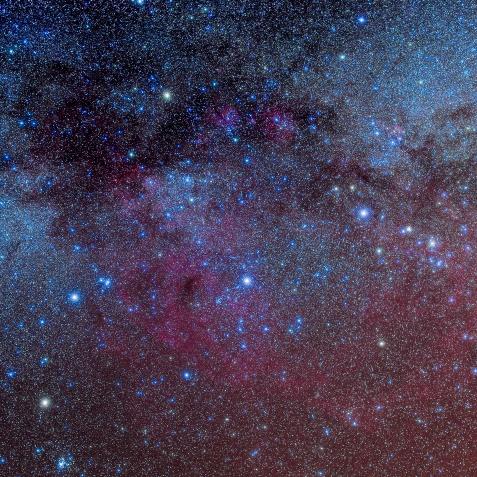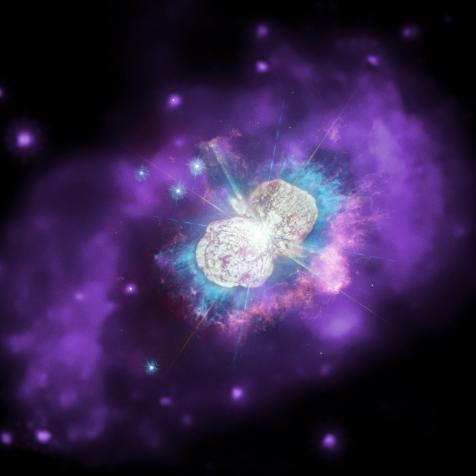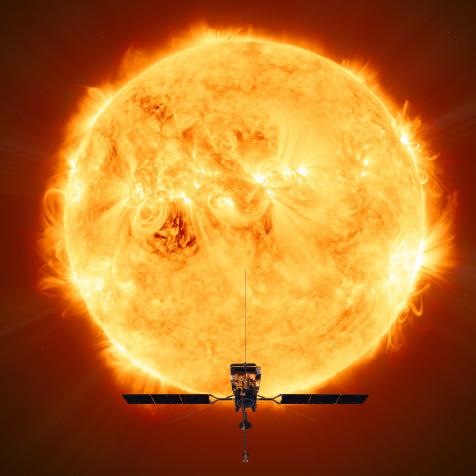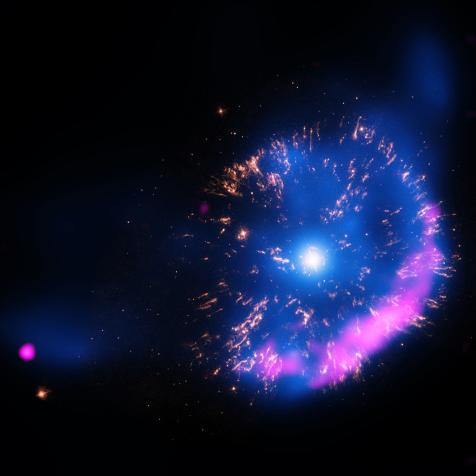
NASA/ESA/ESO/Wolfram Freudling et al. (STECF)
When Did the First Stars Shine?

Our universe is home to up to two trillion galaxies, with each galaxy hosting hundreds of billions of stars. That’s…a lot of stars. Each one a ball of fearsome energies, powered by the nuclear fusion of fundamental elements in their hearts. Each one pouring out light into the empty cosmos, illuminating our universe for our wonder and delight.
Billions of years ago, it was darker. Much darker.
There was a time before stars. Before light. When our cosmos was young, it was much smoother than it is today. The hydrogen and helium gas that had been born out of the Big Bang was evenly distributed, with only tiny variations from place to place. There simply wasn’t enough material compressed into high enough densities to trigger nuclear fusion.

NASA/Planck Mission
This illustration summarizes the almost 14-billion-year-long history of our universe. It shows the main events that occurred between the initial phase of the cosmos - where its properties were almost uniform and punctuated only by tiny fluctuations - to the rich variety of cosmic structure that we observe today, ranging from stars and planets to galaxies and galaxy clusters.
With no nuclear fusion, there were no stars.
With no stars, there was no visible light.
We call it the Dark Ages.
What ended the Dark Ages was the birth of the first stars, thought to be monsters hundreds of times more massive than our sun. This was the Cosmic Dawn, which marked the age of light in our universe, when stars began shining and galaxies started forming

NASA/Hubble
Image of "Star Birth" Clouds in M16. Astronomers believe that molecular clouds, dense clouds of gas located primarily in the spiral arms of galaxies are the birthplace of stars. Dense regions in the clouds collapse and form "protostars". Initially, the gravitational energy of the collapsing star is the source of its energy. Once the star contracts enough that its central core can burn hydrogen to helium, it becomes a "main sequence" star.
Those first stars burned fiercely and died quickly – no members of that first generation survive to the present day, 13 billion years later. But they left their mark. They shone so brightly that their light may still be visible today after traveling billions of light-years in the vast gulfs of emptiness between the galaxies.
Those first stars are so far away from us that we can’t capture them with even our most powerful telescopes. Instead, we can try to image the first galaxies, the first collections of billions of stars, hoping that some of that combined light comes from the first generation of stars.
Recently, a team of astronomers based at the University College London used 70 hours of observing time to take pictures of 6 extremely distant galaxies. The galaxies were so distant that they appeared as only a few bright pixels in the images. Those galaxies were among the first to appear in the universe, and may contain members of that revolutionary Cosmic Dawn generation.
Based on their observations, the team was able to estimate the age of the galaxies and from there they estimated that the Cosmic Dawn ignited between 250 and 350 million years after the Big Bang. That means that it took that long for the primordial hydrogen and helium gas to cool and condense to form the first generation of stars.

NASA/STScI
This still image shows the timeline running from the Big Bang on the right, towards the present on the left. In the middle is the Reionization Period, when the initial bubbles caused the Cosmic Dawn.
Upcoming missions, like NASA’s James Webb Space Telescope, will hopefully have the optical oomph to directly observe those galaxies in greater detail, and its first targets may be the six subjects of the recent study. The hope is that detailed observations will pin down exactly when the Cosmic Dawn took place, how long it took for the first stars to live and die, and how they transformed the universe to give us the cosmos that we know today.
Dive Deeper into the Cosmos
Journey Through the Cosmos in an All-New Season of How the Universe Works
Watch on Science Channel and stream on discovery+.














































































